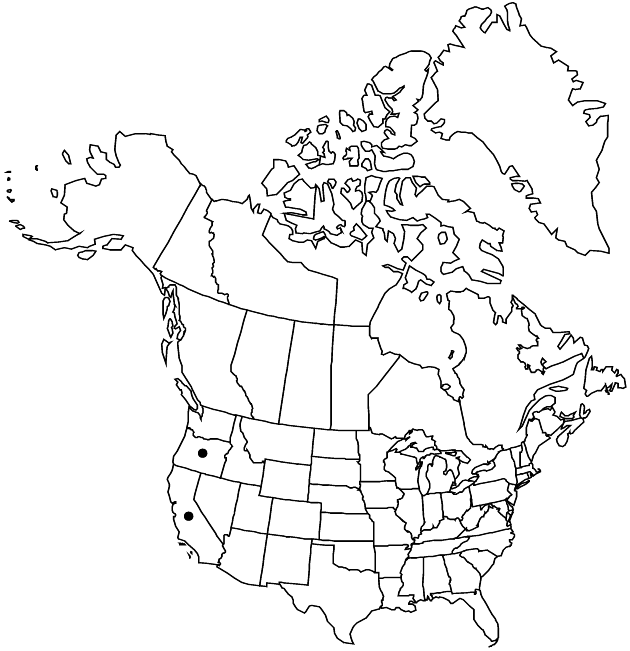Arnica cernua
Fl. N.W. Amer., 373. 1900.
Plants 10–30 cm. Stems (often reddish purple) mostly simple. Leaves 3–4 pairs, mostly cauline (basal often persistent on sterile rosettes); petiolate (petioles usually narrow, proximalmost sometimes broadly winged); blades (often reddish purple) usually elliptic to ovate, sometimes subcordate, 1.5–8 × 1.5–4 cm (often relatively thick, nearly succulent), margins usually entire or serrate, sometimes crenate or slightly lobed, apices acute to rounded, faces glabrous or scabrous. Heads usually 1, sometimes 2–3 (often nodding in bud). Involucres campanulate-turbinate. Phyllaries 8–14, ovate to broadly lanceolate. Ray-florets 5–10; corollas yellow to slightly orange. Disc-florets: corollas yellow; anthers yellow. Cypselae dark gray, 6–8 mm, sparsely to densely hirsute (hairs duplex); pappi white, bristles usually barbellate, sometimes subplumose. 2n = 38.
Phenology: Flowering Apr–Jun.
Habitat: Serpentine soils, conifer forests
Elevation: 500–1500 m
Discussion
Selected References
None.
